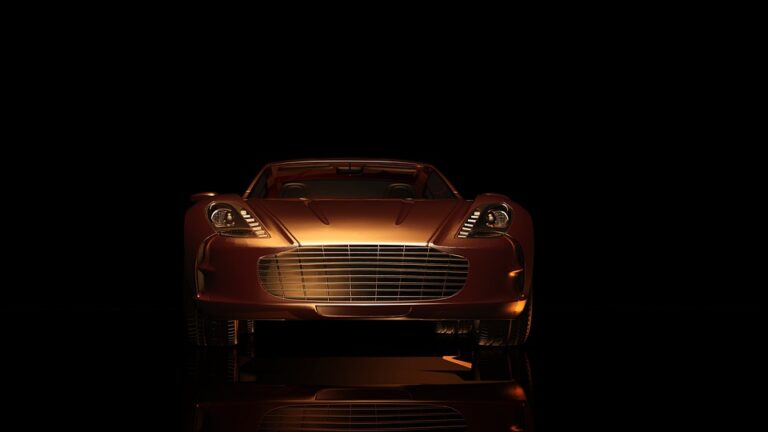The Future of Automotive Design: Trends Shaping Tomorrow’s Vehicles
As we advance into a new era of innovation and sustainability, the future of automotive design is evolving exceptionally. The fusion of technology and creative design philosophies is leading to vehicles that are not only aesthetically pleasing but also functional, sustainable, and user-centric. In this article, we explore the trends shaping tomorrow’s vehicles, encompassing the latest advancements in automotive design and what they mean for consumers and the industry alike.
The Rise of Electric Vehicles (EVs)
One of the most significant trends in automotive design is the rise of electric vehicles. With a reported 54% increase in global EV sales between 2020 and 2021, interest in sustainable automotive options is at an all-time high (International Energy Agency). Automotive designers are now focusing on creating sleek, aerodynamic shapes that improve energy efficiency. The design philosophy for EVs emphasizes both performance and sustainability, offering consumers an eco-friendly alternative without compromising on style.
Modular Design for Customization
Another fascinating trend taking shape in the realm of automotive design is modular design. This innovative approach allows for vehicles to be customized according to individual preferences and lifestyles. For instance, automotive manufacturers are beginning to create modular components that can be easily swapped out, such as different battery packs or interior configurations.
Benefits of Modular Design
- Customization: Consumers can tailor their vehicles to better fit their needs.
- Sustainability: Replacing parts versus whole vehicles minimizes waste and promotes longer-lasting cars.
- Efficiency: Modular designs can streamline production processes, reducing manufacturing costs.
This trend not only enhances user experience but also conveys a message of sustainability and adaptability in the design of modern vehicles.
Digital Integration and Smart Technology
As vehicles become increasingly connected, digital integration is reshaping automotive design. The idea of a "smart car" is no longer futuristic; it’s here and requires a new approach in design. Technologies such as augmented reality (AR), artificial intelligence (AI), and advanced driver-assistance systems (ADAS) are being integrated into vehicles, enabling features like:
- 360-degree visibility: Offering drivers complete awareness and ensuring safety.
- Personalization: Adjusting seating, climate, and entertainment options based on user preferences.
- Real-time updates: Providing the latest information on traffic, weather, and vehicle health.
The challenge for automotive designers is to seamlessly integrate these complex technologies into the user interface without overwhelming the driver. Think of it like a smartphone; if too many apps clutter the home screen, it becomes unwieldy. As in automotive design, balance is key.
Sustainability and Materials Innovation
Sustainable automotive design is not just about electric engines—it also encompasses the materials used. Designers are increasingly turning to recycled materials and bio-based alternatives to lessen the environmental impact of vehicle production.
Examples of Sustainable Materials
- Recycled Plastics: Many manufacturers now use recycled plastics sourced from ocean waste to create components.
- Natural Fibers: Hemp, flax, and other bio-based materials are being utilized for interiors, providing aesthetic beauty while being eco-friendly.
Automotive design is moving towards a circular economy where vehicles are designed from the ground up to minimize waste and ensure recyclability at the end of their lifecycle. Statistically, the use of recycled materials in cars can reduce the carbon footprint of manufacturing by up to 30% (European Commission).
Enhanced Vehicle Autonomy
Autonomous vehicles are pushing the boundaries of automotive design. The challenge here is not just about creating cars that can drive themselves; it’s about designing the interior and user experience around this technology.
Envision a vehicle where passengers can engage in activities like working or even lounging during their commutes. This requires a redesign of traditional car layouts, moving toward an open, user-friendly space equipped with comfortable seating and smart surfaces.
Conclusion
The future of automotive design is certainly promising, as emerging technologies and a focus on sustainability are shaping tomorrow’s vehicles. The integration of electric power, modular designs, smart technology, and innovative materials signifies a shift not only in how cars look but also in their environmental impact and user experience. As the industry progresses, it will be exciting to see how these trends continue to evolve.
For more insights into automotive-related trends, check out these articles on buzzo.live: "The Impact of Electric Vehicles on Urban Design", "Modular Homes: A Look into the Future of Sustainable Living", and "The Role of AI in Modern Transportation".
To gain additional insights into the automotive industry’s evolution, explore these external links from the International Energy Agency and this report by the European Commission.
By staying informed and engaged with these exciting trends, consumers can look forward to vibrant, sustainable, and user-centered automotive designs that prioritize performance, style, and the planet’s health. The future is bright for automotive design, and it’s just around the corner.


